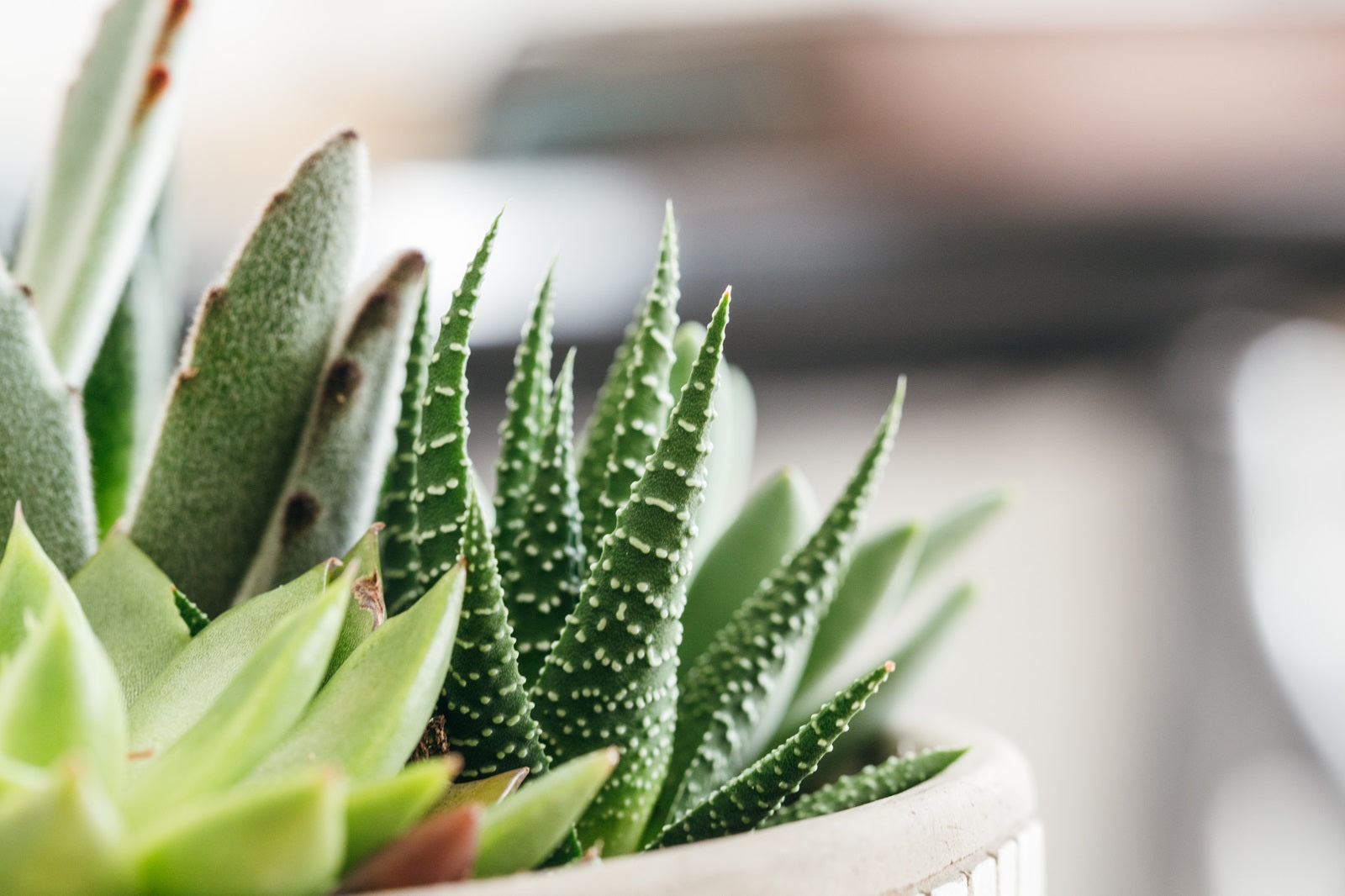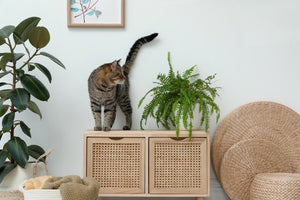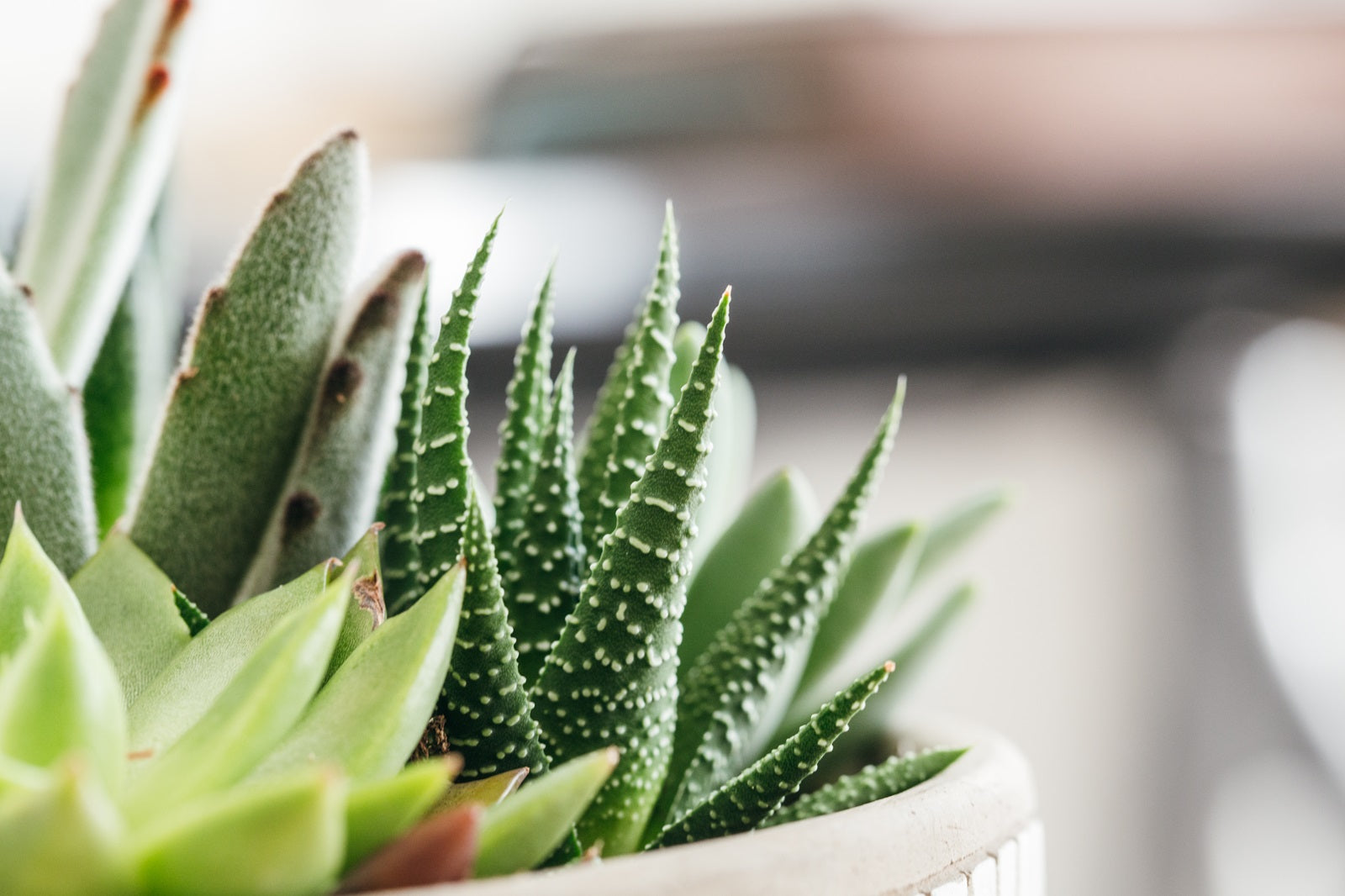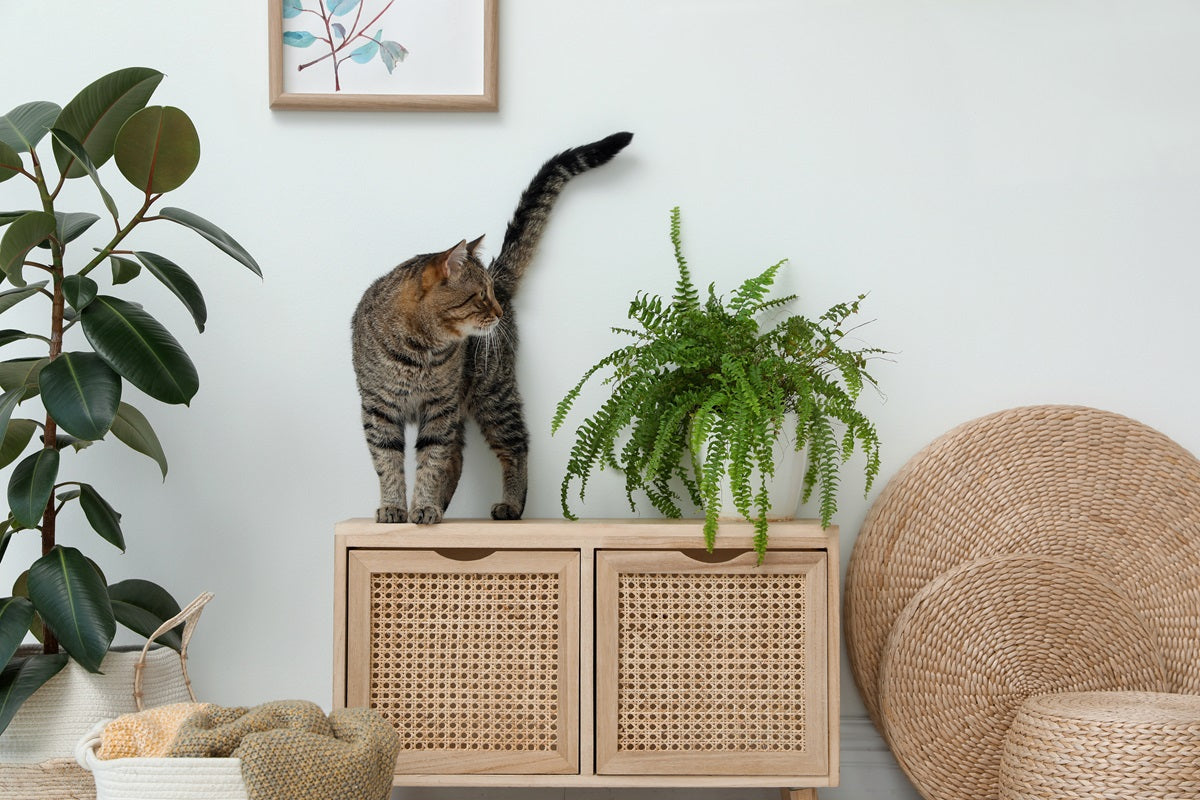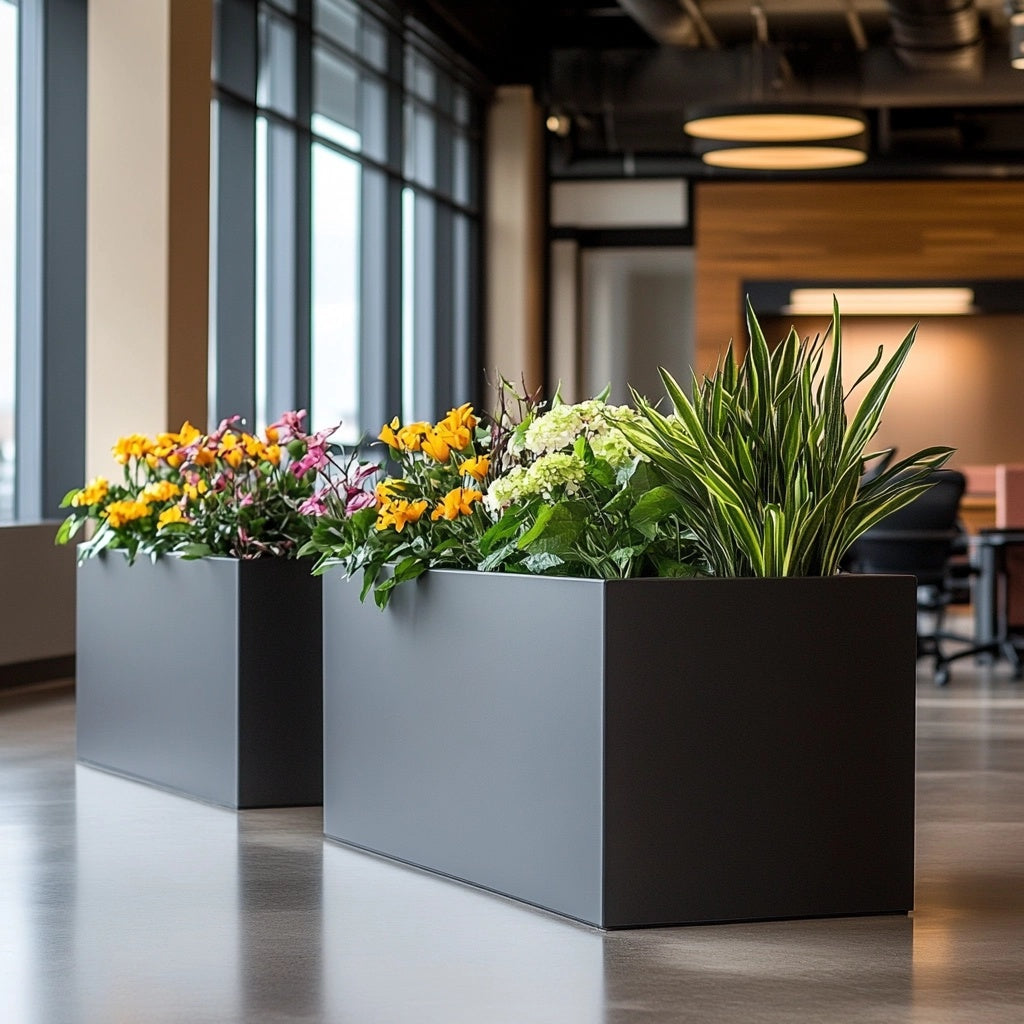Succulents are a fantastic choice for outdoor spaces due to their low-maintenance nature and versatility. These hardy plants thrive in various conditions, from full sun to partial shade, and can be grown in a variety of containers. Whether you have a small balcony or a spacious backyard, there's a succulent planter idea to suit your style and space.
These projects are not only easy and budget-friendly but also beginner-friendly. So, explore some creative ways to incorporate succulents into your outdoor decor!
7 Catchy Outdoor Succulent Planter Ideas
From repurposing everyday objects to crafting unique structures, these projects offer a variety of options to suit your style and space. Transform your outdoor space into a botanical oasis with these creative and easy-to-follow succulent planter ideas:
1. Upcycled Wooden Box Planter

Give a new life to an old wooden box by turning it into a rustic succulent planter. This is a great way to add a touch of character to your outdoor space while reducing waste.
Materials you need:
- Old wooden box
- Drill
- Screws
- Succulent soil
- Succulents (e.g., Echeveria, Sedum)
Step-by-step instructions:
- Drill drainage holes: Use a sturdy drill to create several holes in the bottom of the wooden box. This will allow excess water to drain away, preventing root rot.
- Line with moss or newspaper: To prevent soil leakage and create a stable base for the succulents, line the box with a layer of moss or crumpled newspaper. Moss can also help retain moisture.
- Fill with succulent soil: Use a well-draining succulent soil mix. This type of soil is specifically formulated to meet the needs of succulents, which require excellent drainage to prevent root rot. Fill the box with soil, leaving a few inches of space at the top for planting.
- Plant succulents: Carefully remove the succulents from their nursery pots. Gently loosen the roots and remove any excess soil. Place the succulents in the wooden box, spacing them apart to allow for growth. Fill in the gaps with more succulent soil, ensuring that the base of the succulents is covered. Press the soil firmly around the plants to secure them in place.
Bonus Tip: Wooden planters are ideal for succulents that enjoy well-draining soil and plenty of sunlight.
2. Hanging Birdcage Succulent Planter

Add a touch of whimsy to your outdoor space with a hanging birdcage planter. This unique container is perfect for displaying trailing succulents or air plants.
Materials you need:
- Old birdcage
- S-hook
- Chain or rope
- Succulent soil
- Succulents (e.g., String of Pearls, Tillandsia)
Step-by-step instructions:
- Attach the S-hook: Securely fasten the S-hook to the top of the birdcage. Make sure it's firmly attached so the planter doesn't accidentally fall.
- Hang the birdcage: Choose a suitable location to hang your birdcage planter. A tree branch or the ceiling are popular options. Attach the chain or rope to the S-hook and carefully hang the birdcage. Adjust the length of the chain or rope to achieve your desired height.
- Fill with succulent soil: Gently fill the birdcage with succulent soil. Be careful not to overfill, as this can make the planter too heavy. Leave some space at the top for planting.
- Plant succulents: Carefully select your succulents. Trailing succulents or air plants are ideal choices for hanging birdcage planters. Gently place the succulents in the soil, ensuring that their roots are covered. Fill in any gaps with more soil.
Bonus Tip: Consider using air plants or trailing succulents like String of Pearls for a unique and cascading effect. Air plants don't require soil, so you can simply attach them to the sides or bottom of the birdcage using wire or fishing line.
3. DIY Cement Succulent Bowl

Create a sleek and modern planter with a DIY cement bowl. This project is a bit more involved but yields a stunning result.
Materials you need:
- Cement mix
- Mixing bowl
- Rubber gloves
- Silicone mold or bowl
- Succulent soil
- Succulents (e.g., Sempervivum)
Step-by-step instructions:
- Prepare the cement mix: Follow the instructions on the cement mix package carefully. This typically involves mixing the cement powder with water in a specific ratio. Stir the mixture thoroughly until it reaches a smooth, creamy consistency.
- Pour the cement mixture: Carefully pour the prepared cement mixture into the silicone mold or bowl. Make sure to distribute the mixture evenly to avoid any air pockets.
- Let the cement dry completely: Allow the cement to dry undisturbed for the recommended time period, usually 24-48 hours. Drying times may vary depending on factors like temperature, humidity, and the thickness of the cement layer.
- Remove the mold or bowl: Once the cement is completely dry, gently remove the mold or bowl. If you're using a silicone mold, the cement should easily pop out. If you use a bowl, you may need to run a knife around the edges to loosen the cement.
- Fill with succulent soil: Fill the finished cement planter with a well-draining succulent soil mix. Leave some space at the top for planting.
- Plant succulents: Carefully select your succulents and plant them in the planter. Ensure that the roots are covered with soil and that the succulents are firmly planted.
Bonus Tip: For a step-by-step guide on making a cement planter, check out this handy DIY cement planter guide.
4. Vintage Teacup Succulent Planters

Repurpose vintage teacups into adorable mini planters. These charming containers will add a touch of nostalgia to your outdoor decor.
Materials you need:
- Vintage teacups
- Saucers
- Pebbles
- Succulent soil
- Succulents (e.g., Echeveria, Sedum)
Step-by-step instructions:
- Add a drainage layer: Place a layer of pebbles or small stones at the bottom of the teacup. This will help improve drainage and prevent the roots from sitting in standing water, which can lead to rot.
- Fill with succulent soil: Fill the teacup with a well-draining succulent soil mix. Leave some space at the top for planting.
- Plant a succulent: Carefully select a small succulent that will fit comfortably in the teacup. Gently remove the succulent from its nursery pot and loosen the roots. Place the succulent in the center of the teacup and fill in the gaps with more soil.
- Place on saucer: Place the teacup on the saucer to catch any excess water that drains out. This will help protect surfaces from stains and moisture damage.
Bonus Tip: For improved drainage, consider adding a layer of pebbles or small stones at the bottom of the teacup before filling it with soil. This will help prevent the roots from sitting in standing water, which can lead to rot.
5. Cinder Block Succulent Wall

Create a vertical garden with stacked cinder blocks. This unique planter is perfect for small spaces and adds a modern touch to your outdoor decor.
Materials you need:
- Cinder blocks
- Succulent soil
- Succulents (e.g., Agave, Aloe)
Step-by-step instructions:
- Stack the cinder blocks: Arrange the cinder blocks in a desired pattern or shape. You can create a simple vertical wall, a staggered design, or a more intricate structure. Experiment with different configurations to find the look you like best.
- Fill the gaps: Once you've arranged the cinder blocks, fill the gaps between them with succulent soil. Use a trowel or your hands to pack the soil firmly into place. Make sure there are no large gaps or voids that could cause drainage problems.
- Plant succulents: Carefully select your succulents and plant them in the gaps between the cinder blocks. Choose succulents that are suited to the amount of sunlight your cinder block wall will receive. Consider using a variety of succulents with different sizes, shapes, and colors to create a visually interesting display.
Bonus Tip: For a more durable and weather-resistant cinder block wall, consider using construction adhesive to secure the blocks together. This will help prevent the wall from shifting or collapsing over time.
6. Repurposed Tire Succulent Planter

Give an old tire a new purpose by turning it into a large succulent planter. It’s one of the best front porch large succulent planter ideas that will add a bold statement to your outdoor space.
Materials you need:
- Old tire
- Drill
- Succulent soil
- Succulents (e.g., Agave, Aeonium)
Step-by-step instructions:
- Drill drainage holes: Use a sturdy drill with a bit appropriate for the thickness of the tire. Drill several holes in the bottom of the tire to allow excess water to drain away. This is crucial to prevent root rot, a common problem for succulents.
- Line the tire with newspaper or fabric: This layer will help prevent soil from leaking out the drainage holes and create a more stable base for your succulents. Newspaper or fabric can also help retain moisture.
- Fill the tire with succulent soil: Use a well-draining succulent soil mix. This type of soil is specifically formulated to meet the needs of succulents, which require excellent drainage to prevent root rot. Fill the tire with soil, leaving a few inches of space at the top for planting.
- Plant your chosen succulents: Carefully remove the succulents from their nursery pots. Gently loosen the roots and remove any excess soil. Place the succulents in the tire, spacing them apart to allow for growth. Fill in the gaps with more succulent soil, ensuring that the base of the succulents is covered. Press the soil firmly around the plants to secure them in place.
Bonus Tip: Choose succulents that are suited to the size of the tire. Opt for larger succulent varieties like Agave or Aeonium for a bold look.
7. Driftwood Succulent Display

Create a natural and coastal-themed planter using driftwood. This rustic display will add a touch of beachy charm, for example, to your patio area.
Materials you need:
- Driftwood
- Succulent soil
- Succulents (e.g., Sedum)
Step-by-step instructions:
- Arrange the driftwood: Gather a variety of driftwood pieces in different sizes and shapes. Arrange them on a flat surface to create your desired design. You can create a simple linear arrangement, a curved shape, or a more intricate structure. Experiment with different combinations to find the look you like best.
- Fill the gaps: Once you're satisfied with the arrangement, fill the gaps between the driftwood pieces with succulent soil. Use a trowel or your hands to pack the soil firmly into place. Make sure there are no large gaps or voids that could cause drainage problems.
- Plant succulents: Carefully select your succulents and plant them in the gaps between the driftwood pieces. Choose succulents that are suited to the amount of sunlight your driftwood display will receive. Consider using a variety of succulents with different sizes, shapes, and colors to create a visually interesting display.
Bonus Tip: Use hardy succulents like Sedum for best results in this design. Sedum varieties are well-suited to the conditions of driftwood planters, as they are drought-tolerant and can thrive in well-draining soil.
Tips for Maintaining Outdoor Succulent Planters
To keep your outdoor succulent planters thriving, it's important to provide them with proper care. By following these simple maintenance tips, you can ensure that your succulents remain healthy and vibrant throughout the year:
|
Factor |
Ideal Conditions |
|
Watering Frequency |
Allow soil to dry out completely between waterings. |
|
Sunlight Needs |
Most succulents require at least 6 hours of direct sunlight per day. |
|
Soil Type |
Use well-draining succulent soil. |
|
Fertilization Tips |
Fertilize once or twice a year with a balanced fertilizer. |
Tip: To protect your outdoor succulents from extreme weather, cover them with a blanket or move them indoors during cold spells to prevent frost damage. During hot summer days, provide shade to prevent sunburn. This will help your succulents thrive and maintain their healthy appearance year-round.
Choosing the Right Succulents for Your Planters
Selecting the right succulents for your outdoor planters is essential for creating a beautiful and thriving display. Here are some popular options to choose from:
|
Succulent |
Light Requirements |
Growth Habit |
|
Echeveria |
Full sun to partial shade |
Rosette-forming |
|
Sedum |
Full sun to partial shade |
Low-growing, spreading |
|
Sempervivum |
Full sun |
Rosette-forming, hardy |
|
Agave |
Full sun |
Large, rosette-forming |
|
Aloe |
Full sun |
Rosette-forming |
|
String of Pearls |
Bright light |
Trailing |
|
Tillandsia (Air Plants) |
Bright, indirect light |
Epiphytic (do not require soil) |
Where to Place Your Succulent Planters

To place your succulent planters in the ideal location, consider the amount of sunlight they require.
Place full sun succulents in areas that receive at least 6 hours of direct sunlight per day, such as south-facing patios or balconies. For those that prefer partial shade, consider placing them under trees or near east- or west-facing walls.
To create a focal point in your outdoor space, consider placing your succulent planters on patios, balconies, or near entryways. The size of the planter should be proportionate to the overall space. A large planter can be a focal point in a spacious area, while smaller planters can add interest to a more intimate space.
Conclusion
With a little creativity and imagination, you can create stunning outdoor succulent planters that add beauty and interest to your space. These low-maintenance plants are perfect for beginners and experienced gardeners alike. So, get started and enjoy the rewarding experience of growing succulents outdoors!


